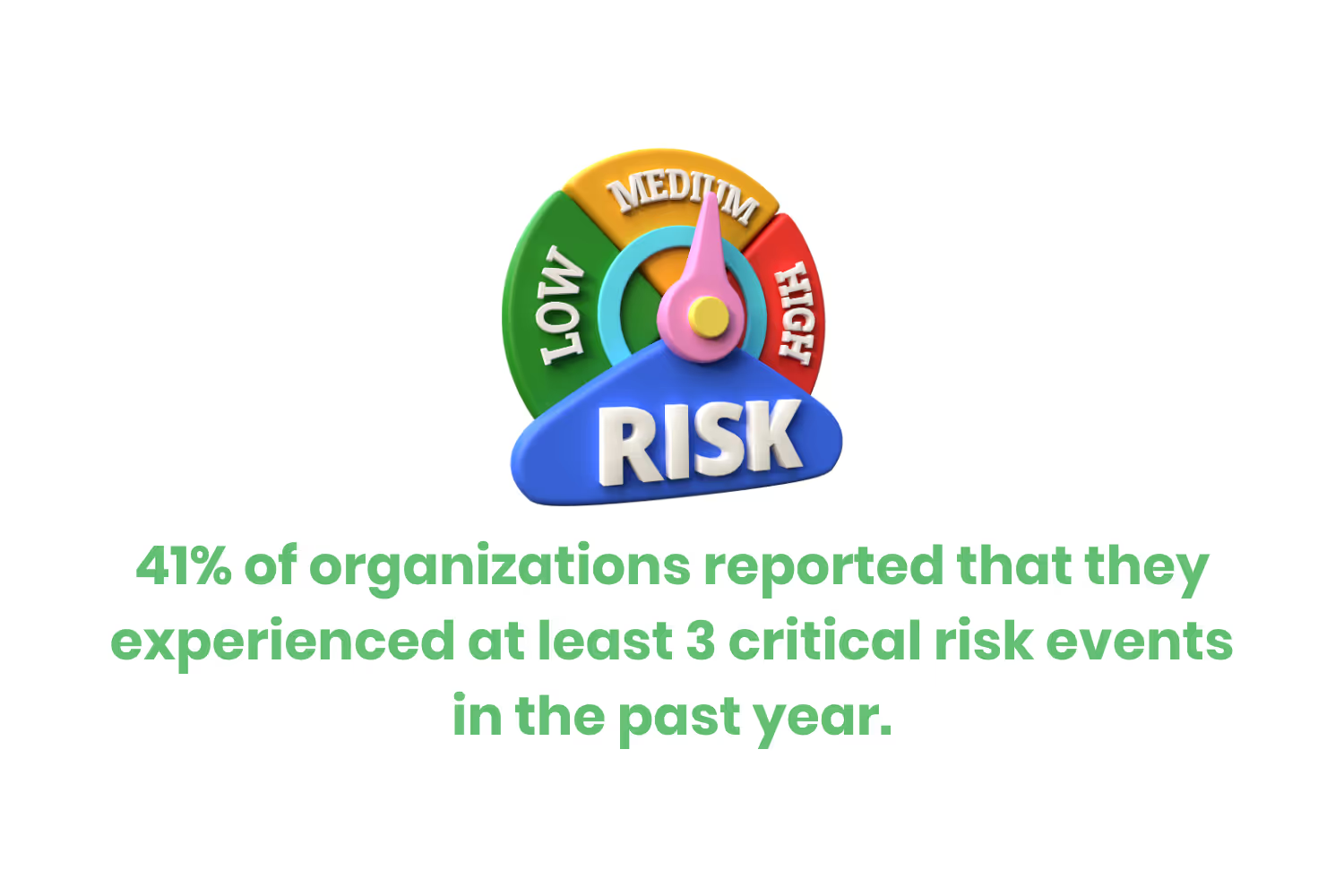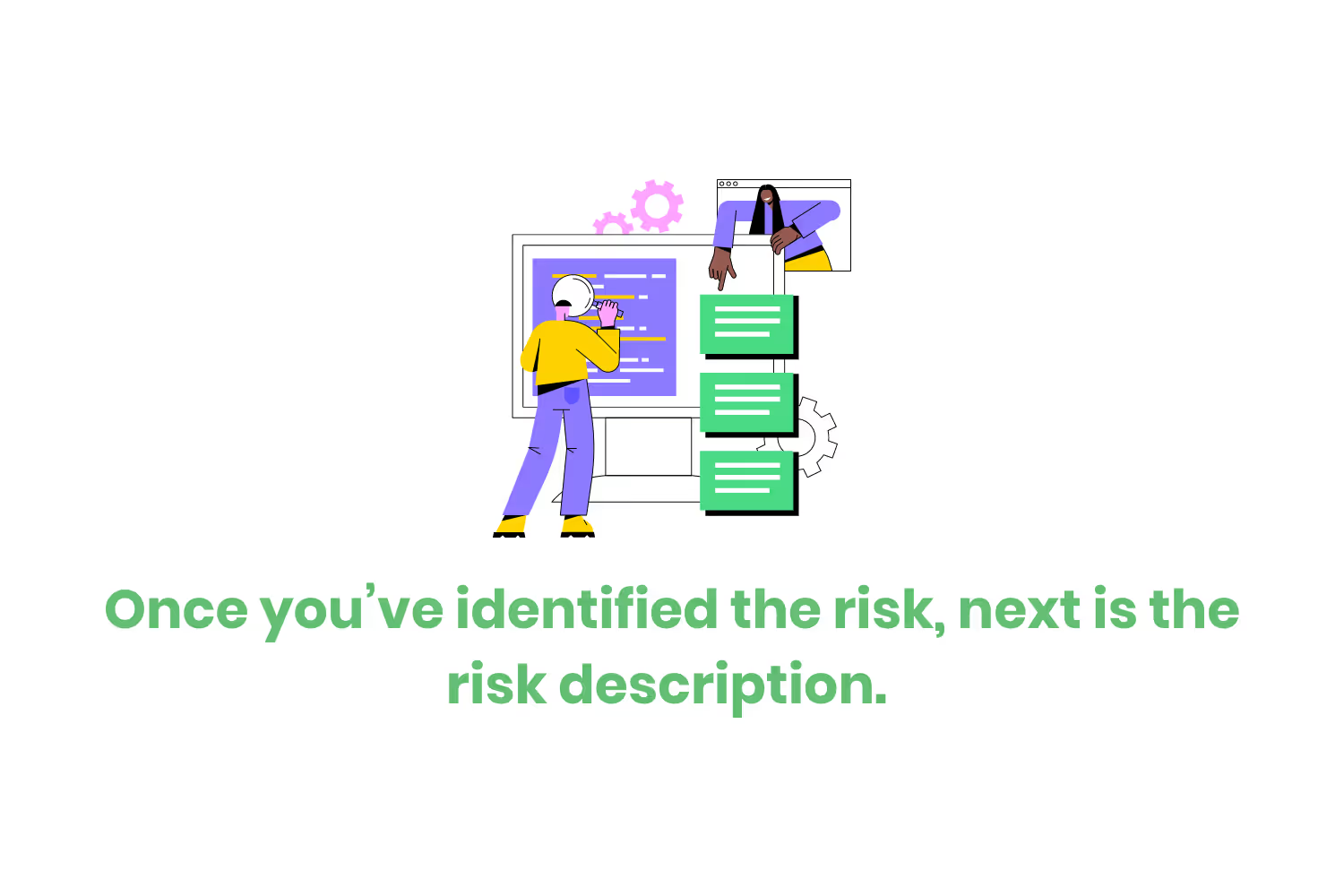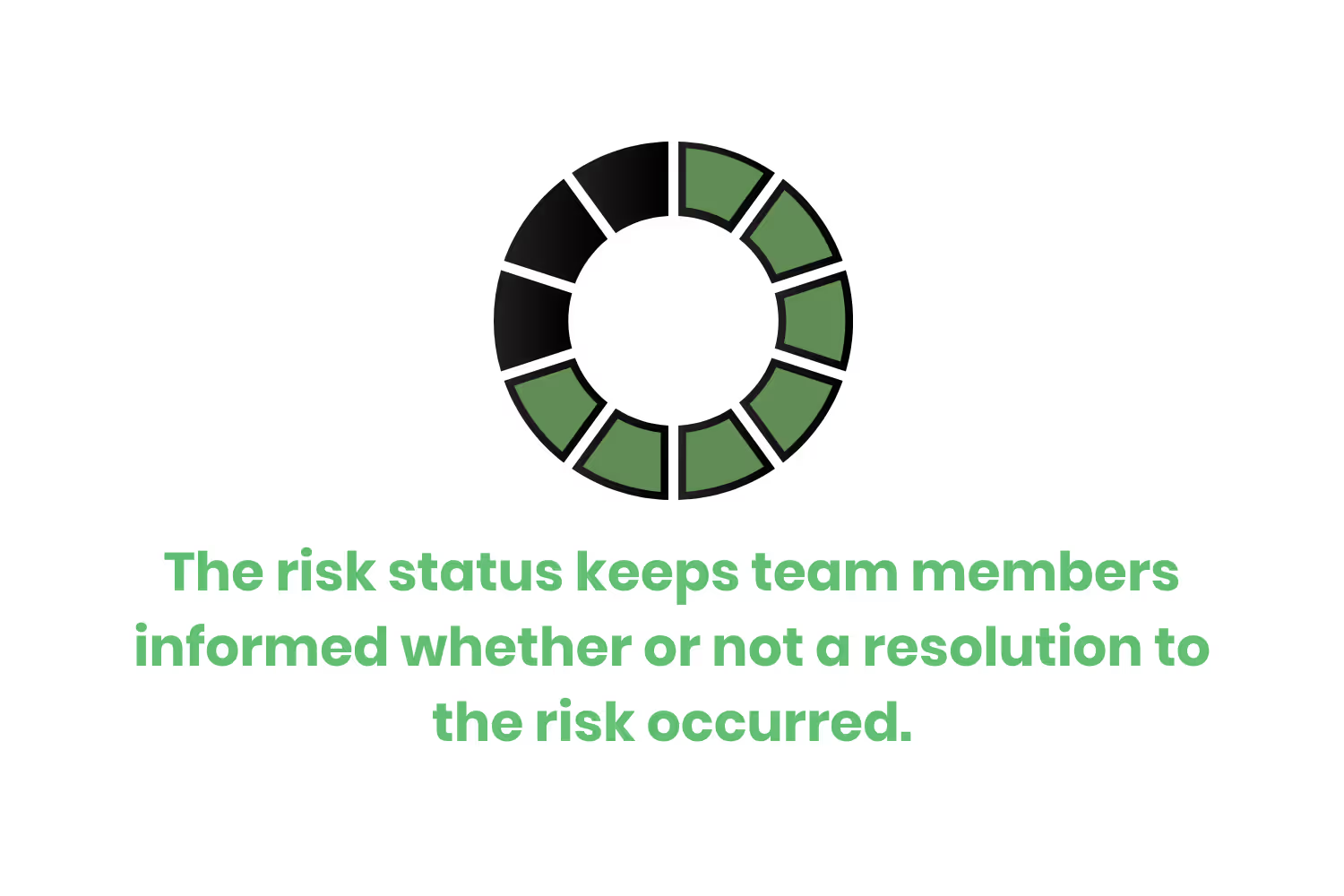[ANSWERED] What is a Risk Register?
In this blog we discuss what a risk register is, what it looks like, and some benefits of optimizing these color-coded gems.

65% of senior finance leaders agree that the volume and complexity of corporate risks have increased over the last five years.
Risk, or the possibility of something undesirable happening, is inevitable. This blog is strictly about business…or should I say risky business (ba dum tss)...but risk is present in every area of life.
In regard to business, risk plays in the game as both an internal and external factor. This means that there are risks that can occur from within the company, such as hiring a new employee or deciding to increase marketing costs.
These are internal decisions that come with potential risks. What if the employee you hire ends up not meshing well with the company culture or doesn’t get along with current employees? What if you increase your marketing expenditures and the results don’t pay off? These are scenarios that businesses can monitor and use best judgment to make good decisions.
There are also external risks that businesses can try their best to monitor, but at the end of the day also need to learn to adapt to whatever changes these factors bring. A recent example of this that we should all know of is COVID-19. Covid changed the way that most, if not all, of companies operate.
41% of organizations reported that they experienced at least 3 critical risk events in the past year.

Risk is an important calculation in keeping a company alive and well. Knowing how to navigate risks can lead to great payoffs.
In fact, success cannot happen without the underlying possibility of risks being present. If there were never risks to take in business, everyone would be doing the same things and there wouldn’t be much of a sense of accomplishment.
So we can’t get rid of risk, but we can learn to avoid or jump over it when the hurdles appear. We need to switch the perspective on risk through research and analysis to figure out how we can combat risk.
The tool I will be writing about in this blog does exactly that. Project and or risk managers…if you know you know. If you don’t…that’s okay! Keep reading to understand what a risk register is, what it looks like, and some benefits of optimizing these color-coded gems.
What is a Risk Register?
A risk register does 3 main things. It identifies a potential risk, analyzes that risk, and then provides solutions for those risks if they were to arise. It is a tool mainly utilized by risk managers or project managers and their teams.
Think of a risk register as a priority checklist of risks. From least likely to happen to most likely to happen, risk registers spell it all out for you as well as the necessary steps you should take if a problem occurs.
Whether it be construction, hospitality, healthcare, or corporate business and more, risk registers work across industries.
Depending on the complexity of each project, risk registers will look different. Some could be simple while others are more in-depth. It all comes down to the information and intricacy of the project.
Risk registers are commonly placed in spreadsheets or risk management software systems.
These are active tools so information can receive updates, reviews, and used again and again.
They’re created early on within the planning stages of a project and viewed throughout the rest of the implementation phases.

9 Qualities of a Risk Register
Here are some elements you can expect to see in a risk register. This also serves as an outline as to how to structure yours!
Depending on the severity of the project, some of these elements may be short and sweet while others can turn out to be more extensive. The important thing to point out is that whatever works best for project managers as well as their team is what will ultimately work best. There are a few things each risk register should have in order to be an effective tool.
You want to create something that’s useful and practical. The nice thing about risk registers is that they’re recyclable. The same template works for different projects. All that changes is the information that is being put into them .
Make sure you’re communicating well with your team on the process of how to use the risk register at hand.
1. Identify the Risk
This one is pretty self-explanatory. You have to put a name to the risk in order to identify it. Having a set name that’s known amongst you and your team makes sure you’re on the same page.
In this area of the risk register, the risk name and identification number will be here. Some other information that will be beneficial is the identification data and a short summary or description giving more information about what the risk is. The identification date will help to monitor how much time it is taking to mitigate risks.
2. Describe the Risk
Once you’ve identified the risk, next is the risk description. Similar to the summary, this will go over the main takeaways and why it’s necessary to log the risk.
The average length of a risk description is around 80 to 100 characters. So this is quite short and just a general description of the risk. It just gives you a bit more depth into the situation than the risk identification.

3. Categorize the Risk
If you thought we couldn’t get any more organized, well here we are. There are all sorts of ways that you can categorize risks. This will help your team quickly identify the potential risks at hand.
It also makes it easy to assign to team members. This way they know what they are looking for. Some examples of ways that you can categorize risk are budget, schedule, technology, information, security and quality.
Again it’s all up to you to choose category titles which will be whatever works best for your team.
4. Risk Probablity
After taking some time to assess the risks, this is the part where you rate the likelihood of the risk happening. You can categorize them using numbers. Examples include not likely, likely, very likely.
The two important parts here are the analysis of the risk and the likelihood of it happening.
Doing this can help you identify a priority.
5. Analyze Risk
Analyzing risk is different from the previous step that we just went over. The analysis is looking at the potential threat that the risk could have on your project.
This will also help you identify the most important risks to tackle. You can analyze risk using a 5-point scale such as very low, low, medium, high, and very high.

6. Mitigate Risks
This is one of the most important parts of the risk register. After all, this is practically what it’s all about.
This is also called a risk response plan. It should include step-by-step instructions on how to mitigate and or lessen the risk. A brief description of the intended outcome should exist as well as how the plan will affect the impact.
Depending on the risk, the time it takes to find a solution will differ. It might take more than one person to figure out the answer to the issue.
7. Risk Priority
Here is where you will determine the priority of the risk. In order to determine priority, consider how likely it is for the risk to occur as well as the actions necessary to mitigate the issue.
You can use numbers to help scale priorities and make lists. For example…
- 1: high priority
- 2: medium priority
- 3: low priority
Here is where you can bring in the colors. Color coding is another great way to categorize priorities.
8. Risk Ownership
This determines who’s responsible for implementing the actions necessary depending on the risk. It serves as a good visual in the log to show which team member is responsible for what tasks.
9. Risk Status
The risk status keeps team members informed whether or not a resolution to the risk occurred. Some simple terms to use to update the risk status are open, in progress, or closed.
Depending on the complexity of the project and risk, you can use different or more words such as “hold”.

Benefits
There are quite a few benefits that follow with the usage of risk registers that all flow and fall into place together.
It’s a great way to stay connected with your team and make sure that you all are on the same page. All the information is being presented in the same way and you have the opportunity to design it in any way you want.
Risk registers save time and effort. The pre-planning and preparation in the planning phase saves you time and energy later in the project. If an anticipated risk happens, you already have a thought-out process on how to mitigate or resolve the issue present.
As I mentioned earlier, the risk register template is reusable. Easy updates can happen to the risk register tool because it is all software run. The same template can work for different projects. All that changes is the information for each project.
In order to have a well-functioning risk register, the correct information needs to be present. The fact that your whole team will have access to the risk register helps ensure accurate information entry.
The risk register in itself is like a checklist. It helps you to avoid missing any important risks or information because it is all recorded and organized. This makes it easy to look back on and analyze. At the end of projects, you can see what risks you anticipated that did happen, what didn’t, or what unexpected things occurred.
These benefits seem to be quite repetitive. That’s because they all flow together so well. An effective risk register produces results that flow cohesively.
Conclusion
I hope this gave you a better understanding of what risk registers are and how they work. While risk registers are mainly used by project managers and their teams, anyone can use them for any project both big and small.
Risk registers are a great way to hold information in one place while staying organized and having the ability to add a personal touch to them.
Once you create your golden template, you can just run with it and plant the template into new projects. As risk becomes more apparent in the business world and society in general today it doesn’t hurt to add this efficient tool to your lineup.
Not only will you see benefits in project progression, but communication and teamwork will follow.
Now let’s get into some risky business.
Emphasize your product's unique features or benefits to differentiate it from competitors
In nec dictum adipiscing pharetra enim etiam scelerisque dolor purus ipsum egestas cursus vulputate arcu egestas ut eu sed mollis consectetur mattis pharetra curabitur et maecenas in mattis fames consectetur ipsum quis risus mauris aliquam ornare nisl purus at ipsum nulla accumsan consectetur vestibulum suspendisse aliquam condimentum scelerisque lacinia pellentesque vestibulum condimentum turpis ligula pharetra dictum sapien facilisis sapien at sagittis et cursus congue.
- Pharetra curabitur et maecenas in mattis fames consectetur ipsum quis risus.
- Justo urna nisi auctor consequat consectetur dolor lectus blandit.
- Eget egestas volutpat lacinia vestibulum vitae mattis hendrerit.
- Ornare elit odio tellus orci bibendum dictum id sem congue enim amet diam.
Incorporate statistics or specific numbers to highlight the effectiveness or popularity of your offering
Convallis pellentesque ullamcorper sapien sed tristique fermentum proin amet quam tincidunt feugiat vitae neque quisque odio ut pellentesque ac mauris eget lectus. Pretium arcu turpis lacus sapien sit at eu sapien duis magna nunc nibh nam non ut nibh ultrices ultrices elementum egestas enim nisl sed cursus pellentesque sit dignissim enim euismod sit et convallis sed pelis viverra quam at nisl sit pharetra enim nisl nec vestibulum posuere in volutpat sed blandit neque risus.

Use time-sensitive language to encourage immediate action, such as "Limited Time Offer
Feugiat vitae neque quisque odio ut pellentesque ac mauris eget lectus. Pretium arcu turpis lacus sapien sit at eu sapien duis magna nunc nibh nam non ut nibh ultrices ultrices elementum egestas enim nisl sed cursus pellentesque sit dignissim enim euismod sit et convallis sed pelis viverra quam at nisl sit pharetra enim nisl nec vestibulum posuere in volutpat sed blandit neque risus.
- Pharetra curabitur et maecenas in mattis fames consectetur ipsum quis risus.
- Justo urna nisi auctor consequat consectetur dolor lectus blandit.
- Eget egestas volutpat lacinia vestibulum vitae mattis hendrerit.
- Ornare elit odio tellus orci bibendum dictum id sem congue enim amet diam.
Address customer pain points directly by showing how your product solves their problems
Feugiat vitae neque quisque odio ut pellentesque ac mauris eget lectus. Pretium arcu turpis lacus sapien sit at eu sapien duis magna nunc nibh nam non ut nibh ultrices ultrices elementum egestas enim nisl sed cursus pellentesque sit dignissim enim euismod sit et convallis sed pelis viverra quam at nisl sit pharetra enim nisl nec vestibulum posuere in volutpat sed blandit neque risus.
Vel etiam vel amet aenean eget in habitasse nunc duis tellus sem turpis risus aliquam ac volutpat tellus eu faucibus ullamcorper.
Tailor titles to your ideal customer segment using phrases like "Designed for Busy Professionals
Sed pretium id nibh id sit felis vitae volutpat volutpat adipiscing at sodales neque lectus mi phasellus commodo at elit suspendisse ornare faucibus lectus purus viverra in nec aliquet commodo et sed sed nisi tempor mi pellentesque arcu viverra pretium duis enim vulputate dignissim etiam ultrices vitae neque urna proin nibh diam turpis augue lacus.



![[ANSWERED] What to do if your email is on the dark web?](https://cdn.prod.website-files.com/67e2b8210878abcba6f91ae6/68adc0209238d61bc357cb8d_EmailonTheDarkWeb_1224.avif)
![[ANSWERED] What is Dark Web Monitoring?](https://cdn.prod.website-files.com/67e2b8210878abcba6f91ae6/68adbe4fe3e9533f2c658048_WhatisDarkWebMonitoring_1224.avif)